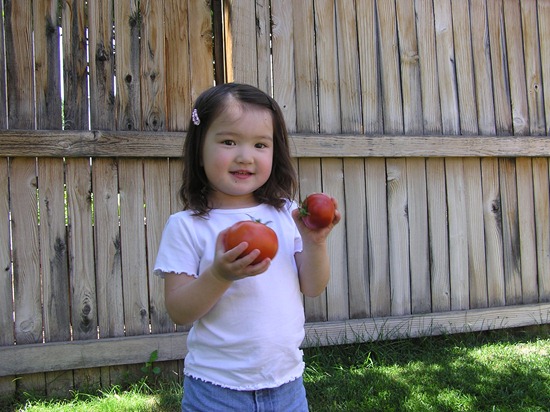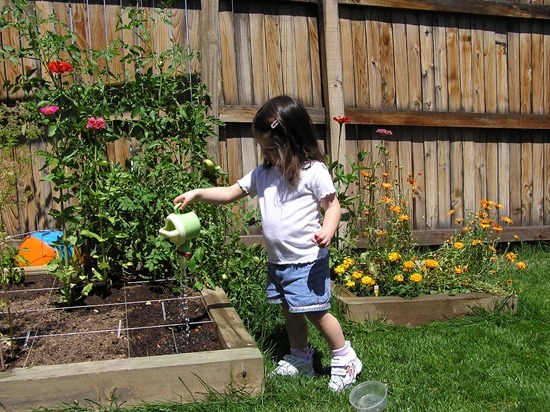GrowVeg vegetable gardening software: Square Foot Gardening and more
11.3 years ago garden planning, spring, sprouting, square foot gardening
Seeing a few rays of sunshine in the gloomy Pacific Northwest, I decided to open up GrowVeg and start planning for my fall crops for the upcoming season. I was pleased to notice a new bit of functionality the Square Foot Gardening feature. I started growing with the square foot method after being inspired with my first gardening book appropriately titles “Square Foot Gardening” by Mel Bartholomew. I consider him the original cheap vegetable gardener where this book provides a great way to produce more food in less space but is also filled with very cost efficient tips for your home garden.
GrowVeg takes advantage of this technique by allowing you to select the plants you want to grow and automatically shows you the amount of “squares” your plant needs as well as how many plants you can add in the square with the number appearing in the top left corner.
One additional benefit of GrowVeg is when you use the service for a couple years, not only can you save time by reusing the template from the previous year, but it also remembers what you planted at the various locations and warns you to not plant that family of vegetables in the same location for effective crop rotation (another recommendation of Square Foot Gardening) by showing a glowing red indicator (see below) where to avoid planting this year.
Another cool feature is revealed by clicking on the info icon it will display a real picture of the plant and all of the basic information you need to know to grow almost any edible plant you can think of.
I will admit last year I did not follow the planting dates that GrowVeg recommended, I was optimistic (ok really just impatient) and started my seed a few weeks too early resulting in some poor yields for my cold spring crops. This year I am going to be a little more pessimistic and use their dates and following the convenient planting guide. Which along with the reminder emails (and a little restraint) hopefully I will been eating a few more spring veggies this year.
If you want to to try GrowVeg.com out for yourself you can sign up for a free 30 day trial and in a 5-10 minutes you can have some detailed plans as well.
Encourage Green Fingers (of the Tiny Variety)
11.3 years ago cheap, guest post, kids, square foot gardening

There’s nothing quite like letting a child grow their own vegetables to encourage a fussy eater to try new foods. Kids love to get out in the garden and plant their own veggies (preferably getting as dirty as possible in the process). The only frustration that you might encounter is that seeing results can be a bit of a waiting game, especially for those kids who plant seeds in the morning and expect the fruits of their labor to be ready for consumption within just a few hours! Here’s our top tips for growing vegetables with kids.
What you’ll need …
- Seeds are the starting point for any green fingered adventure. No really! If money is tight, there are numerous ways to get your hands on free vegetable seeds. Just be sure to involve your kids as this will make the whole thing seem even more exciting.
- You’ll also want to get hold of some kid friendly gardening tools. The grown up versions are just too heavy for little hands, not to mention potentially very dangerous.
- A dedicated area of the garden just for them. That is unless you could live with tiny hands pulling up your prize radishes before they’re ready to go and tiny (but surprisingly heavy feet) stomping all over your baby lettuces.
What you should grow …
As mentioned kids like nothing better than instant gratification. There’s not a whole lot of that around in the pursuit of gardening. Although you might very well derive a sense of inner satisfaction from seeing a freshly laid row of seeds, kids often fail to see the attraction. The next best thing to instant gratification is perhaps continual gratification, so draw yourself up a schedule of what is going to ready first and plant accordingly. Once you’ve been going at it for a while, you should be able to come up with a schedule that yields regular results.
- 1. Cress. We all know cress is not the most exciting thing in the world, but it grows super fast and because of that it’s always a great place to start. Nothing else is going to give you something that’s ready to eat in around a week, plus kids can grow funny cress hair in broken egg cups. What’s not to love?
- 2. Beans. Another thing that gives kids those quick results they yearn for is beans. They’ll love making a little “tee pee” using bamboo stakes tied together in a pyramid shape. The vine will start to grow within about ten days. It can be fun for kids to watch how quickly the vine shoots up (measure every few days to monitor progress), not to mention the possibility of them starring in their very own version of Jack and the Beanstalk.
- 3. Cherry tomatoes. Nothing says instant gratification than a food you can eat right off the plant. Go for a variety of different colors to up the fun stakes and without too much delay your kids can start enjoying these sweet, healthy snacks. Just don’t be under any kind of illusion that even one of the cherry tomatoes will reach the kitchen.
- 4. Potatoes. Growing potatoes can be immense fun with children since when it comes to harvesting time it can rather feel like digging for buried treasure. “I don’t like digging for treasure” said no child ever! It’s undoubtedly a lot of fun, but you must always make sure that children don’t eat the toxic leaves, sprouts, and fruit stems of the plant. For this reason, unless supervision is guaranteed, save the potato growing for older children.
- 5. Pumpkins. What child would ever pass up the chance of growing their very own Jack O Lantern? Not many, that’s for sure! We love the tip provided by Erica over at Northwest Edible Life who advises that a child’s name carved into the green skin of a softball sized pumpkin will scar over and retain the carving as it grows to maturity. The result is rather fabulous personalized pumpkins.
- Why not try introducing your children to the delights of growing their own vegetables? It may or may not solve a fussy eating issue, but even if it doesn’t, at least you will have both had fun trying. Isn’t that what parenting is all about?
Author Bio
Linda Forshaw is mum to five year old Freya. As well as being a regular contributor to college resource site Degree Jungle, Linda is a full time writer and blogger specializing in education, social media, and entrepreneurship. Contact her on Twitter @seelindaplay
Square Foot Gardening Grow More in Less Space: Book Review
13.2 years ago product review, square foot gardening
I can not say enough positive things about this book, it might be because the very first gardening book I ever read was the original Square Foot Gardening book. It provided me with the basic tools to setup my first garden with great success. Provided I can basically credit my success to gardening and the eventual creation of this blog directly to the initial reading of this book, in many ways I look at Mel Bartholomew
as the original “cheap vegetable gardener” with the many cost saving tips he mentions in his books. Though the original book written many decades ago can still be applied today, there were a few parts of this book that made following all the techniques difficult, one specific example is his “perfect soil” consisted of 7 different ingredients which many could be purchased at your local nursery but one specific ingredient “wood ashes” are much less common with majority of houses using alternate fuels for heating these days. The good news this problem as well as many others were taken care of in his latest installment of his series All New Square Foot Gardening: Grow More in Less Space!
As the title explains the primary premise of square foot gardening is by dividing your garden into one foot by one foot squares. Not only is this beneficial for garden organization but also allows an easy way to implement intensive gardening in your own backyard garden allowing you to grow more vegetables in much less space compared to growing the same plants in rows. Be eliminating the need for rows or more specifically the need for spaces between rows you can plant more vegetables in a smaller space. This is visualized below with the visualization in the left being 144 carrots being grown using the square foot method compared to the visualization in the right using conventional row methods (with minimal gaps between rows) yielding 60 carrots with both being planted in a 9 square foot area.
Now with no rows you might be thinking, “How can I weed, water, or harvest without having access through rows, the solution to this is actually quite simple by creating a series of small beds no more than 4 feet wide. This provides easy access to do your garden maintenance by only requiring a maximum of a 2 foot reach required to access any square from one of the four sides. Below you can see my then two year old daughter demonstrating the ease of this.
Now I have talked a bit about the process lets get back to the book. What is great about this book is it provides chapters on all of the stages of starting your own garden. It goes from picking your best location to start your garden, creating vertical trellises, starting seeds indoors/outdoors, watering and maintaining your plants, and finally harvesting. But wait there’s more…there is also a great section on extending your gardening season with hoop covers and cold frames with detailed directions on all of these.
Though the content of the chapters are great the section I keep coming back to year after year is the appendix in the back that lists the common types if vegetables which provides great visuals to how and when to plant and harvest each of these veggies as well as specific care instructions to deter various disease and pests associated with that particular plant. Unfortunately this section was removed from the new book, but the good news is since the previous version
has been in print for over 30 years you can pickup a copy used for almost nothing.
Overall if there is on gardening book I would recommend to someone starting out with gardening All New Square Foot Gardening: Grow More in Less Space! would be the first book I would recommend. Not only is the advice very effective it is also economical providing great methods using many materials you may already have in your back yard.










